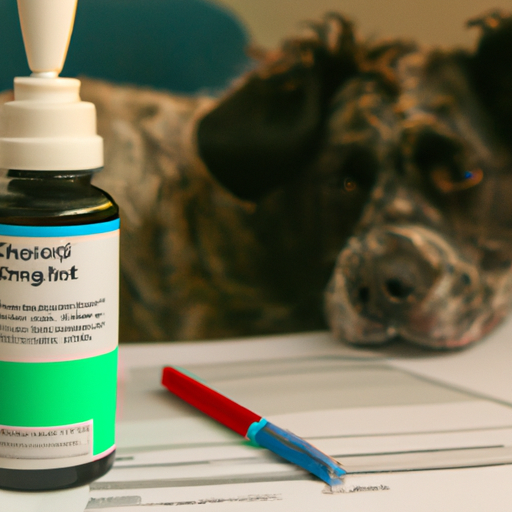Understanding Benadryl and its Effects on Dogs
You, as a loving and caring pet owner, might have heard about using Benadryl for dogs. But before you give your furry friend a dose of this over-the-counter medication, it’s essential to understand what it is and how it works.
Benadryl, also known as diphenhydramine, is an antihistamine used to treat allergies, insect stings, motion sickness, and other conditions in humans. Surprisingly, it can also be used for dogs under certain circumstances. It can help your dog with symptoms such as itching, swelling, and even anxiety. However, like any medicine, it should be used responsibly and under the guidance of a vet.
Correct Benadryl Dosage for Dogs
Now that you know what Benadryl is, you might be wondering, “how much liquid Benadryl can I give my dog?” The general rule of thumb is that you should give 1mg of Benadryl for every 1lb of your dog’s weight, every 8 to 12 hours. But remember, this is just a general guideline and the actual dosage may vary depending on your dog’s health condition.
| Weight of Dog | Benadryl Dosage |
|---|---|
| 10 lbs | 10 mg |
| 20 lbs | 20 mg |
| 30 lbs | 30 mg |
| 40 lbs | 40 mg |
Potential Side Effects of Benadryl in Dogs
Like any medication, Benadryl can also cause side effects in dogs, some of which can be quite serious. You need to be vigilant for symptoms like:
- Dry mouth
- Urinary retention
- Increased heart rate
- Rapid breathing
- Sedation or hyperexcitability
If you notice any of these symptoms or anything else unusual, contact your vet immediately.
When Not to Use Benadryl for Dogs
While Benadryl can be a handy medication for some situations, it’s not appropriate for all dogs or all situations. For example, you should avoid using Benadryl in the following cases:
- Your dog is pregnant or nursing
- Your dog has a chronic disease such as glaucoma, cardiovascular disease, or hyperthyroidism
- Your dog is currently taking other medications
Always consult with your vet before giving any medication to your dog.
Alternatives to Benadryl
If you’re uncomfortable with the potential side effects of Benadryl or if it’s not appropriate for your dog, there are alternatives that might be a better fit. These include:
- Natural remedies: such as oatmeal baths for skin allergies, or chamomile tea for anxiety.
- Other medications: there are many other antihistamines and allergy medications that may have fewer side effects. Consult with your vet.
- Preventative measures: avoid known allergens, use flea prevention, etc.
FAQ
Q: Can I give my dog Benadryl for anxiety?
A: Yes, Benadryl can be used to treat anxiety in dogs. However, it should be your last resort after trying other methods.
Q: How long does it take for Benadryl to work in dogs?
A: Benadryl typically starts working within 30 minutes of administration.
Q: Can I give my puppy Benadryl?
A: It’s best to consult with a vet before giving any medication to a puppy.
Q: Can Benadryl be used for all breeds of dogs?
A: Generally, yes. However, some breeds may be more susceptible to the side effects of Benadryl.
Remember, any medication, even over-the-counter ones, should be given under the guidance of a vet. It’s always better to be safe when it comes to the health of your furry friend.



